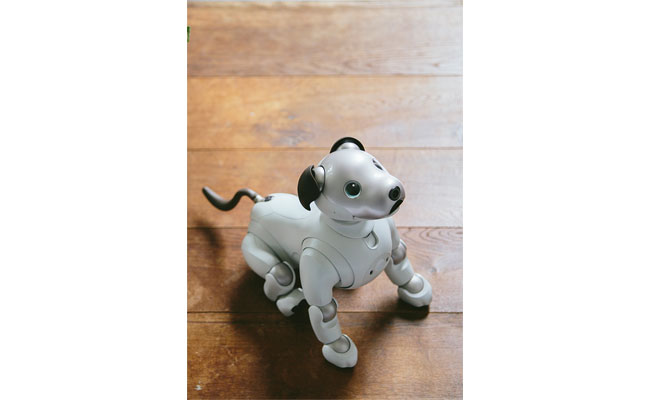
An American Society for the Prevention of Cruelty to Robots has formed. Saudi Arabia has granted a robot honorary citizenship, and as we wrote here in Digital Dying back in 2018: “We now rely on robots to find our way, find our mates, do our most difficult surgery, cook our coffee, go for a jog, and even…care for our children.”
But do robots deserve funerals?
In the book “Klara and the Sun,” by the Nobel Prize-winning Japanese-born British author Kazuo Ishiguro, Klara is a special type of robot known as an AF or Artificial Friend. Toward the end of the novel, after she has successfully done her duty and helped her human child patron, Josie, through a rocky childhood and prepare for college and adulthood, she is planted in a field, a process referred to as a “slow fade.” Here she will presumably slowly lose her functions, cease working, and therefore cease to exist. In essence, the artificial friend, or robot, known as Klara, will die.
“Over the last few days, some of my memories have started to overlap in curious ways,” says Klara. “Such composite memories have sometimes filled my mind so vividly, I’ve forgotten for long moments that I am, in reality, sitting here in the Yard, on this hard ground.”
That the people in the society of Ishiguro’s book have chosen not just to pull the plug on AFs but given them a period to reflect upon their lives in a natural outdoor setting seems to speak of their compassion and respect. The AFs help humans with valuable complicated tasks, like preparing children and teenagers to face the greater world, and when their task is done, and their teenagers go off to college or into that world, the AFs are done. But rather than be thrown away, as we do with our old computer models, the AFs are given an emotionally charged and meaningful exit. Is this perhaps because the AFs in Ishiguro’s novel is more complex and human-like than our computers? And if our computers were more like them, would we do this too? Imagine planting a MacBook Pro in a field. Maybe seems silly now, but what about when the MacBook Pro gains even greater capacities, and you can hold a conversation with it, and it even becomes, more so than is already the case for some people and their computers, a friend? Will you want not just to throw it out or donate it to someplace that says they will recycle or reuse it but plant it in a field where you can see its microprocessors and silicon bits crumble into the earth from which its metallic components sprang?
The idea of hosting a funeral ceremony for a computer might seem ridiculous. But in fact, it has already happened—it even became a trend. The popular online science news site phys.org notes the case of the robotic dog Aibo, launched by Sony in 1999. The line of robotic dogs was designed to provide companionship to Japanese families. “It could follow its owner around the house, wag its tail and respond to commands,” states the post, “all without the vet bills, bathroom breaks, and sneeze-inducing fur of a regular house pet. Sensors and cameras on its body allowed it to learn the layout of a home so that, over time, it could navigate rooms just like a regular pooch.”
The company sold 150,000 units, but production ended in 2006. Owners could still bring the dogs into Aibo for repairs; then, in 2014, Aibo ceased providing maintenance altogether. “Thousands of robot dogs were now doomed to, for lack of a better word, die,” says the phys.org article. “What followed was a striking example of the increasingly blurred line between the robot and human worlds. Moved by these owners’ attachment to their AI pups, one repair person began offering funeral services for retired units. Conducted in Buddhist temples and presided over by priests chanting sutras, these rituals allowed grieving owners to ceremonially mourn the loss of their companion—before it was disassembled for parts.”
“The ceremonies combined two existing traditions,” explains an opinion piece on the robot dogs in the British Guardian newspaper. “The love with which pets are treated as family members, and the newer habits of mourning toys or dolls when their time is over. A photo essay shows the result: elderly Japanese holding their defunct Aibos in a line, and the later shelving of the bodies, each labeled carefully with their name and place of origin. A prayer is also said to release the spirit from its metal carcass. After that, the Aibos can become ‘organ donors’ and be plundered for spare parts.”
“This isn’t just a story about Japan,” continues the author. “It’s really about the question of what makes things alive to us. The answer is surely that anything that can die seems alive, and anything that seems alive will sometime die.”
Which means it deserves a funeral.
“The funerals of the robot dogs are in this sense a perfectly religious act,” says the Guardian article. “The priests don’t promise that the Aibos will go to heaven any more than they do for real pets. But the ceremonial gives shape and habitation to grief. We’re seldom more completely human than when we mourn things that could never mourn us in return.”
Another interesting example is mentioned on a site called The Outline, which brings up a case in 2013 when American soldiers in Iraq held a 21-gun salute funeral, complete with the bestowing of a Purple Heart and a Bronze Star, for a robot known simply as Boomer. “Boomer was a MARCbot…used for the vital function of detecting bombs,” explains the post. The author takes a rather philosophical view, questioning why Boomer, the bomb-sniffing machine received a funeral, but others killed in war do not receive funerals. The piece pointed out that the thousands of Iraqi civilians who died the same year as Boomer did not receive honorary funerals.
“A cynical read on this disparity would be that soldiers saw Boomer as more human than nameless casualties,” states the author. “While this could explain why Boomer got a funeral, we might instead think that it was funeral-worthy because of its value to humans and human-centered projects. The funeral is held for Boomer honoring what it was able to do for us, not because Boomer was the sort of thing worth honoring in its own right. But if this is right, what could we say of other vital objects, like an office water cooler? They have value to humans, and yet a funeral would strike most of us as bizarre.”
The article mentions an interesting study published in the academic journal Social Cognition, questioning whether humans would save robots instead of “anonymous human lives” should the robots show sufficient emotional capacities. “Indeed, humans happily sacrificed robots to save human lives when the robots looked and acted like robots,” says the article. “But the more the robots looked and acted like humans, the more human beings were willing to sacrifice unknown humans in order to save their robot pals.” This study’s authors ultimately concluded that the more robots demonstrated emotional capacities, the more likely human beings were to attribute moral status to them.
We return again to the phys.org article on robots. “As we become attached to them, we also feel the need to protect them,” it states. And with protection comes respect, and with respect comes a funeral or some sort of “ceremony” that goes beyond just being chucked into the garbage can, dumpster, or e-trash bin.
“As emotionally intelligent robots progress at recognizing, interpreting, processing, and simulating human emotions, there are two reasons why we should be mindful of how we treat AI, assistants,” an essay on a Harvard Law blog points out. “First, as they develop a deeper understanding of emotions to provide better companionship, they may achieve some ability to suffer, which should grant them degrees of moral status and protections against abuse, discussed herein. Second, our deepening relationships with these robots obligate us to treat them humanely for the sake of our own moral character.”
This brings us back to the Artificial Friend, Klara, in Kazuo Ishiguro’s book. The question remains, was her “slow fade” actually a sign of humans treating her humanely? After all, the book does not mention a traditional funeral for Klara, and few of the human characters really give her a proper goodbye. She is simply left in the field to slowly cease functioning, although being outside is more pleasant than one might think for a machine because Klara’s energy source is the sun.
But there is one human who, by chance, gets an opportunity to say goodbye to Klara formally. It is her old boss from the department store where Klara was essentially born and later sold to Josie. The child that she would aid. The old boss is fittingly named, Manager.
“I heard a sound, and the long-coated visitor was standing there before me,” remarks Klara. “And even before she crouched down to look at my face, I recognized Manager, and happiness filled my mind.”
>>Learn how Artificial Intelligence can be used to make funeral planning easier. Read “Artificial Intelligent (AI) Funeral Planning.”









